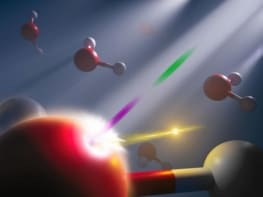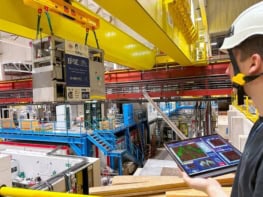Physicists in Canada are the first to use laser light as a catalyst to control chemical reactions. The technique could prove to be an important tool for manipulating the properties of matter at the molecular level.

While chemists routinely use lasers to control reactions, some light is absorbed by the target molecules – a process that has permanent and unwanted effects on the chemistry. No light is absorbed in this new technique called dynamic Stark control (DSC), which makes it similar to a traditional chemical catalyst.
The method was developed by Albert Stolow and colleagues at Ottawa’s Steacie Institute for Molecular Sciences and Queen’s University in Kingston, Ontario (Science 314 278). The group used the electric field associated with an ultrafast laser pulse to modify the molecular energy levels that dictated how a chemical reaction proceeded.
Traditional catalysts are highly specialized chemicals that modify the outcome of a chemical reaction by altering molecular energy levels. They can be very difficult to develop and implement. By contrast, DSC is delivered via ultrafast laser pulses that can be modified to suit a particular reaction. Stolow explained that this will allow chemists to adjust energy levels on time scales similar to the duration of a chemical reaction. As a result, DSC could revolutionize the field of catalysis.
“By being able to apply electrical forces at will to reacting molecules, and adjusting them dynamically on the time scale of chemistry itself, we can gain new insight into the nature of the electrical forces which govern chemical reactions”, explained Stolow.
According to Stolow, DSC will become and important component of a “quantum control toolbox” for manipulating matter at the molecular level. He believes that DSC could be used to control molecular switches in quantum information systems, sharpen optical images of single cells or even to perform molecular-scale surgery on single cells.
Stolow and colleagues directed a 150 femtosecond infrared laser pulse at IBr molecules, which were dissociating into iodine and bromine atoms. The bromine atoms are produced in two different atomic states and the researchers observed a change the relative abundance of the two states after the laser pulse. The molecules absorbed no laser light because the intensity of the pulse was kept below the threshold to ionize the chemical constituents.



